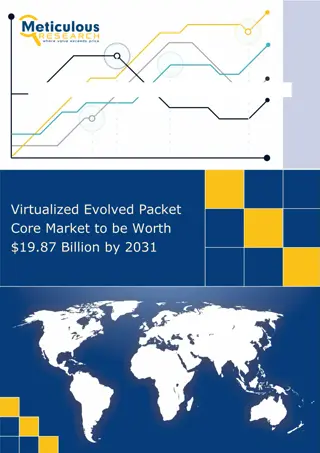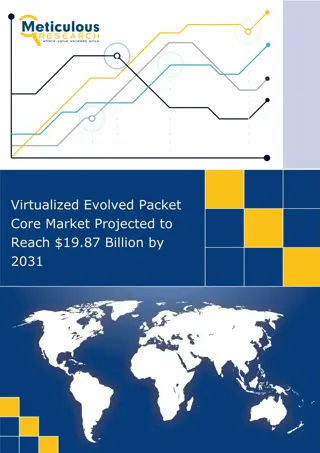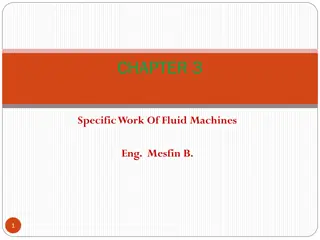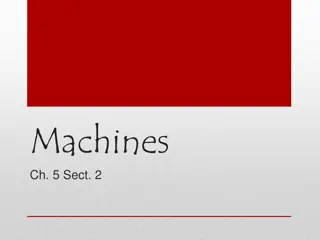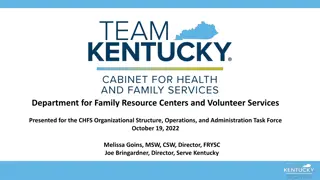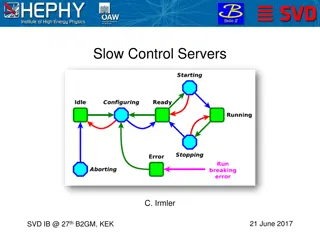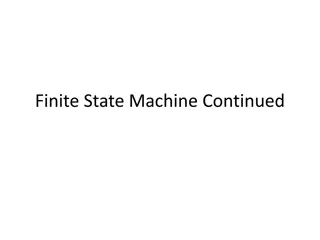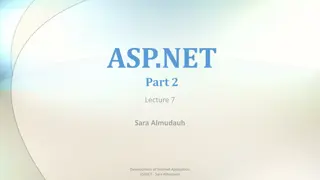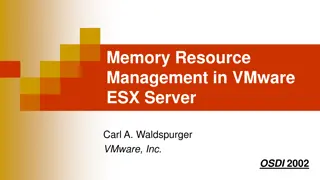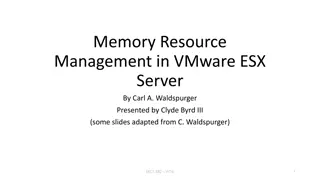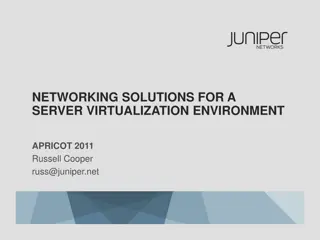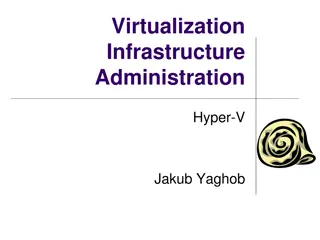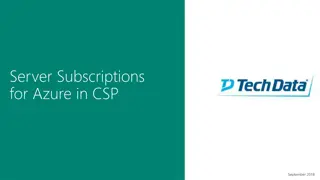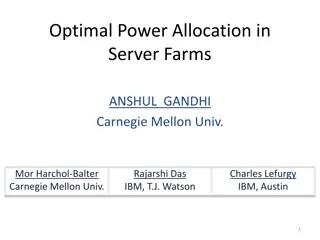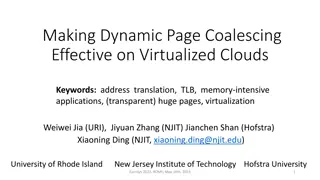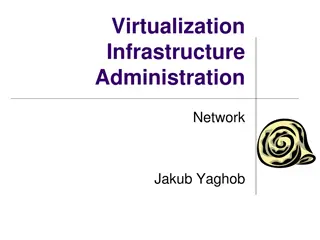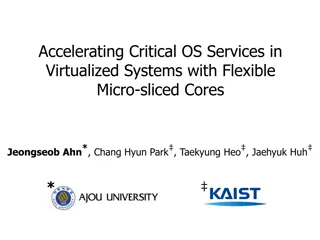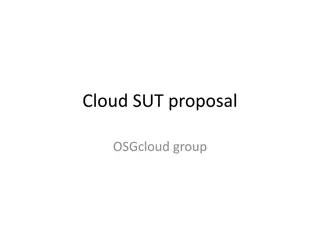Optimal Resource Control for Virtualized Server Machines in Data Centers
Addressing resource allocation challenges in data center virtual machines through dynamic CPU and memory control, ensuring QoS for all applications. Utilizing feedback controllers to optimize resource consumption and enhance efficiency in cloud environments.
Download Presentation

Please find below an Image/Link to download the presentation.
The content on the website is provided AS IS for your information and personal use only. It may not be sold, licensed, or shared on other websites without obtaining consent from the author.If you encounter any issues during the download, it is possible that the publisher has removed the file from their server.
You are allowed to download the files provided on this website for personal or commercial use, subject to the condition that they are used lawfully. All files are the property of their respective owners.
The content on the website is provided AS IS for your information and personal use only. It may not be sold, licensed, or shared on other websites without obtaining consent from the author.
E N D
Presentation Transcript
Celtic-Plus Proposers Day 22 September 2016, stanbul Virtualization, Cloud Computing Optimal Control for Resource Usage of Virtualized Server Machines in Data Centers Dr. zg r Arma an ozgura@netas.com.tr <Your Logo> 1
Teaser In this project, we address the problem of multiple resource usage among virtual machines in data centers via dynamic allocation of CPU and memory resources among virtual server machines. We think that, if our framework that was developed to control CPU usage and memory consumption in virtualized database servers was successfully applied, the resource usages of all of the virtual server machines might be controlled through dynamic allocation of sufficient resources to the virtual machines in the data center. Thus, QoS might be guaranteed for all applications in the data center by maintaining sufficient resource consumption, and more CPU and memory resources can be provided for other applications. We designed multiple SISO feedback controllers to achieve desired CPU usages and memory consumptions under workload. The experimental results confirmed that control theoretical approach increased both the efficiency of the resource usage of the virtual database servers and the QoS in a cloud environment. 2 2 zg r Arma an, ozgura@netas.com.tr
Organisation Profile Neta Telekom nikasyon A. ., founded in 1967, established the first private telecoms R&D in Turkey as of the year 1971, and thus boasts a track-record of 45 years in telecommunications R&D. The company provides innovative end-to-end value-added systems integration and technology services in the fields of information and communications technologies. Its customers range from telco providers to public and private enterprises in domestic and international markets. Neta charters its vision to become Turkey s and Region s #1 systems integrator working as per global standards. Furthermore, with 700+ R&D engineers and 2000+ employees, Neta provides a wide array of services to enterprises functioning in various vertical segments, particularly telco providers and those in finance, general industry and defense sectors. Neta is already a core-member of Celtic-Plus, and involved in several Celtic-Plus activities, regularly attending Celtic-Plus events with expert engineers. 3 3 zg r Arma an, ozgura@netas.com.tr
Proposal Introduction (1) In this project, we focus on resource control in virtual servers and aim to control CPU usage and memory consumption of virtual database servers through proper CPU and memory allocation in cloud computing environments. To control the system, a mathematical model of the system must be obtained. Because first principles methods for computing systems do not exist, methods derived from experiments and observations, rather than theory, are used to derive a mathematical model for virtual database system. We obtained and compared both MIMO (multi input multi output) and multiple SISO (single input single output) models of that system. The PI controller and LQG+ I servo controller with integral action were designed for the virtual database server to minimize the steady state error. The system outputs traced the reference inputs. Thus, QoS is guaranteed. Our system architecture is not specific to any particular cloud environment, and in the future, it can easily be integrated into a different cloud infrastructure. 4 4 zg r Arma an, ozgura@netas.com.tr
Proposal Introduction 5 5 zg r Arma an, ozgura@netas.com.tr
Proposal Introduction 6 6 zg r Arma an, ozgura@netas.com.tr
Partners We are looking for partners that can recommend solutions to current and future needs of our project. The expertise of possible partners required for our project: We are looking for an expertise on visualisation, cloud computing, data center management, automatic control systems, dicrete-time control systems. Type of partner Needed : Large Company University Research Institution SME The role of possible partners in our project: Development, management consultancy, project data support 7 7 zg r Arma an, ozgura@netas.com.tr
Contact Info For more information and for interest to participate please contact: zg r Arma an ozgura@netas.com.tr +905325401359 Yeni ehir Mah. Osmanl Bulvar No:11 Zip code:34912 Kurtk y-Pendik / stanbul/Turkey Web: http://www.netas.com.tr Your Photo 8 8 zg r Arma an, ozgura@netas.com.tr




